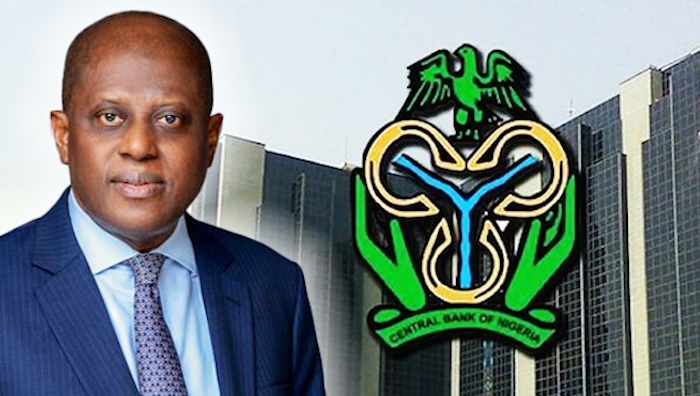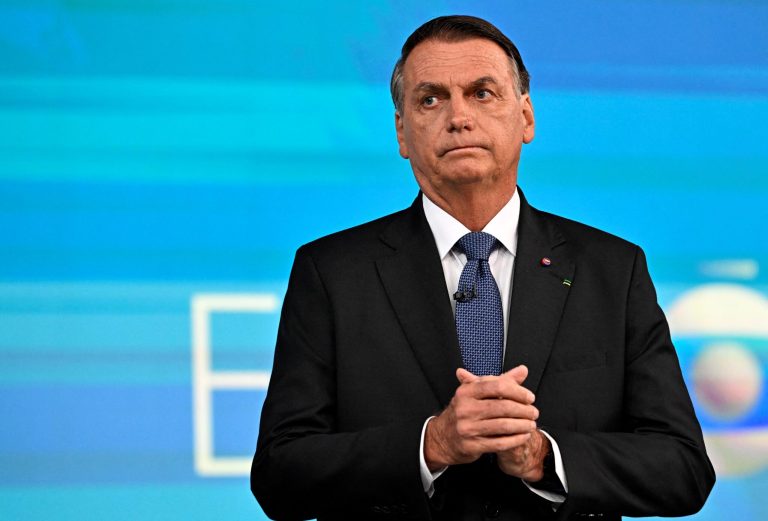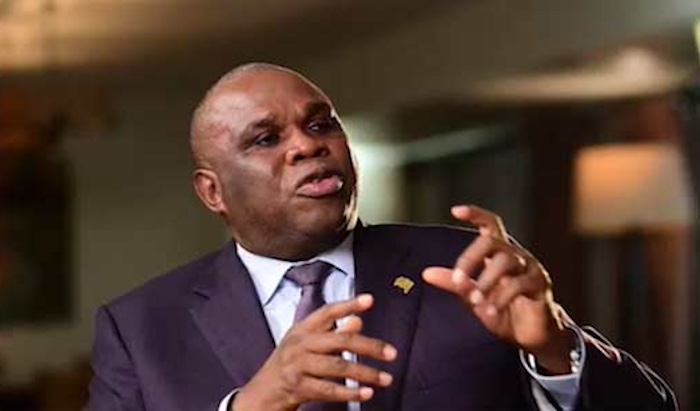
The Central Bank of Nigeria (CBN), on Tuesday resolved to keep the Monetary Policy Rate (MPR), the benchmark interest rate unchanged at 27 per cent.
The central bank, however, adjusted the standing facility corridor around the MPR at +50/-450 basis points, and retain the Cash Reserve Requirement (CRR) for Deposit Money Banks (DMBs) at 45 per cent, merchant banks at 16 per cent, and 75 per cent for non-TSA public sector deposits as well as kept the Liquidity Ratio unchanged at 30 per cent.
Addressing journalists after the two-day meeting of the Monetary Policy Committee (MPC) – the last for 2025 – CBN Governor, Mr. Olayemi Cardoso, said the committee’s decision was underpinned by the need to sustain the progress made so far towards achieving low and stable inflation.
The MPC also reaffirmed its commitment to a data-driven assessment of developments and outlook to guide future policy decisions.
However, Nigeria’s Professor of Capital Market, Prof. Uche Uwaleke, hailed MPC’s decision to maintain the MPR as well as keep CRR and Liquidity Ratio unchanged, noting that with the CBN’s lending window now cheaper, banks face lower marginal funding costs which should ordinarily reduce interbank volatility and encourage lending to SMEs.
The CBN governor said the committee welcomed the continued deceleration in headline inflation (year-on-year) in October 2025, for the 7th consecutive month following sustained monetary policy tightening by the CBN, stable exchange rate, increased capital inflows, and surplus current account balance.
He said the relative stability in the price of Premium Motor Spirit (PMS) and improved food supply, also supported the pace of disinflation.
The CBN governor also disclosed that Gross external reserves increased by 9.19 per cent, reaching a high of $46.70 billion on November 14, 2025, from $42.77 billion at end-September 2025, sufficient to cover 10.3 months of import for goods and services.
Analysts had predicted that the MPC will be encouraged by the recent deceleration in inflation to cut the base rate.
However, Cardoso pointed out that headline inflation remained high at double digit, requiring sustained efforts toward moderating it further.
He said the committee was therefore, of the view that the steady deceleration in inflation across the three measures (headline, core and food) in October 2025, suggests that the lagged impact of previous tight policy measures is expected to continue in the near term.
He said, “Thus, maintaining the current stance of policy, amidst lingering global uncertainties, would allow the effect of previous policy rate hikes to sufficiently transmit to the real economy and further reduce prices.”
However, Cardoso, who read the committee’s communique, expressed satisfaction over the sustained resilience of the banking system, with most financial soundness indicators remaining within regulatory thresholds.
He further acknowledged the substantial progress in the ongoing recapitalisation programme, adding that 16 banks have achieved full compliance with the revised capital requirements by the apex bank.
The committee, thus, urged the CBN to ensure a successful implementation and conclusion of the recapitalisation programme.
Nevertheless, the MPC noted the robust performance of the external sector, evidenced by the surplus current account balance and steady accretion to reserves, which have contributed to stability in the exchange rate and moderation in inflation.
Cardoso said global inflation is expected to maintain a steady decline through 2026, on the back of the combined impact of past monetary tightening, gradual stabilisation of the global supply chain and softening commodity prices.
He added that inflation is, however, projected to remain above pre-Pandemic levels in the near term.
The MPC forecast indicated a sustained disinflation in the near term, to be largely driven by the lagged impact of previous monetary policy tightening measures, supported by the continued stability in the foreign exchange market.
In addition, the ongoing seasonal harvest cycle is expected to boost local food supply, and further moderate food prices, the CBN governor added.
The MPC reaffirmed its commitment to evidence-based policy approach towards achieving the bank’s mandate of price and financial system stability.
However, addressing concerns that the progress so far recorded in the macroeconomy had not trickled down to the masses, Cardoso said having achieved stability which is key to attracting investors, Nigerians will soon feel the impact of ongoing reforms.
He said, “And if you look at the sectors, you will see that over the course of the last couple of quarters, there has been growth. But the fact that we are now accomplishing stability gives greater confidence to investors, who ultimately will invest.
“And so, the growth and some of the issues you are talking about now become issues that are easily taken care of, and I’m almost certain that in the fullness of time, you will begin to see exactly what I’m talking about, that stability has a way of promoting growth and ensuring that it is stable and enduring growth, which is what we really need. What we don’t need is anything that is short-term and cannot be sustained.”
Also, responding to the seeming drought in CBN’s targeted interventions in the economy, and if that has worked under the current monetary policy strategy, Cardoso pointed out that out of the N10.93 trillion CBN interventions to the economy from 2010, about N4.69 trillion or 43 per cent remained outstanding.
He said, “Since we have come, we have been able to rein back about N2 trillion. Now, this is a humongous amount of money. So, what is still outstanding really and truly ties our hands in terms of additional interventions.
“I think I have to make that very clear, because you go in a direction that will easily destabilise your economy, as indeed happened in the past. We are having to take time to bring and rein in all these excessive interventions that had a way of heavily distorting our economy.
“So, from that, my answer to your question is a very simple one: it is working. And why is it working? Two reasons. One, because I can’t do any interventions. My hands are tied anyway. And two is the fact that as a catalyst, to what extent are we using our convening power? Because that’s what it is, really using our convening power to encourage those who should be in the development space to be there.”
Continuing, Cardoso said, “And we are doing that. And the reason we are doing that is because, if you look back at the model of interventions being done, they had certain elements in them which were very discouraging for those who should, by the very nature of their business, be doing it. And why is that?
“Because if others are doing it, like the central bank, at the rates that they are doing it, why would anybody else think they can compete with the central bank? They can’t. What we want is the incentive for them to be creative, innovative, come up with new products, and think outside of the box.
“Those are add-ons that we as central bank believe we are doing and will continue to do. Also, there is a moral hazard. If you take money, it is money to be returned. It’s not money that you take and put in your pocket and walk away.”
Nevertheless, Uwaleke said, “I consider the MPC decision to maintain the MPR at 27 per cent, keeping the CRR and Liquidity Ratio unchanged, a welcome development.
“This is especially so against the backdrop of the narrowing and asymmetry of the standing facility corridor from +250/-250 bps to +50/-450 bps, effectively lowering the ceiling for CBN lending and widening the gap on the deposit end.
“This adjustment signals cautious operational easing, even as headline MPR remains elevated apparently to continue to manage inflation and FX pressure.”
He said, “With the CBN’s lending window now cheaper, banks face lower marginal funding costs which should ordinarily reduce interbank volatility and encourage lending to SMEs.
“The real challenge is whether banks will translate this corridor adjustment into actual lower lending rates. Given fiscal pressures from deficit financing which compound inflation risk and the need to support growth, the MPC decision is quite appropriate.”
The CBN governor further clarified that contrary to speculations that the current stability in the local currency may have been policy-driven to offer temporary relief, Naira’s stability is derived from the interplay between market forces of demand and supply.
The central bank governor said, “Our FX system is one that is open and very transparent. So, you can see who is buying, you can see who is selling. It is this that gives confidence to markets. And it is for that reason that, on average, and on a daily basis, we have half a billion dollars in turnover market activity, with many times the CBN not being a participant.
“For those of you who remember how markets used to operate in those days? The CBN does not intervene; nothing happens. That is now a thing of the past. We have a market that is open, that is transparent, and that plays in accordance with certain rules that everybody has signed up to.”
James Emejo, Nume Ekeghe



